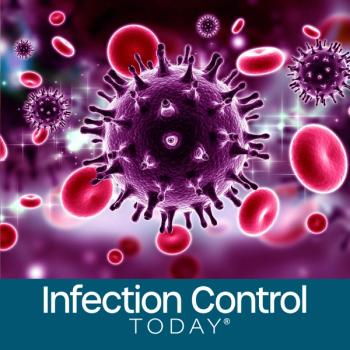
CDC Offers Information on Scarlet Fever
Scarlet fever – or scarlatina – is a bacterial infection caused by group A Streptococcus or "group A strep." This illness affects a small percentage of people who have strep throat or, less commonly, streptococcal skin infections. Scarlet fever is treatable with antibiotics and usually is a mild illness, but it needs to be treated to prevent rare but serious long-term health problems. Treatment with antibiotics also helps clear up symptoms faster and reduces spread to other people.
Although anyone can get scarlet fever, it usually affects children between 5 and 15 years old. The classic symptom of the disease is a certain type of red rash that feels rough, like sandpaper.
Group A strep bacteria can live in a person's nose and throat. The bacteria are spread through contact with droplets from an infected person's cough or sneeze. If you touch your mouth, nose, or eyes after touching something that has these droplets on it, you may become ill. If you drink from the same glass or eat from the same plate as the sick person, you could also become ill. It is possible to get scarlet fever from contact with sores from group A strep skin infections.
Common Symptoms of Scarlet Fever
•A very red, sore throat
•A fever (101° F or above)
•A red rash with a sandpaper feel
•Bright red skin in underarm, elbow, and groin creases
•A whitish coating on the tongue or back of the throat
•A "strawberry" tongue
•Headache or body aches
•Nausea, vomiting, or abdominal pain
•Swollen glands
Illness usually begins with a fever and sore throat. There also may be chills, vomiting, and abdominal pain. The tongue may have a whitish coating and appear swollen. It may also have a "strawberry"-like (red and bumpy) appearance. The throat and tonsils may be very red and sore, and swallowing may be painful.
One or two days after the illness begins, the characteristic red rash appears (although the rash can appear before illness or up to 7 days later). Certain strep bacteria produce a toxin (poison) which causes some people to break out in the rash-the "scarlet" of scarlet fever. The rash may first appear on the neck, underarm, and groin (the area where your stomach meets your thighs), then spread over the body. Typically, the rash begins as small, flat red blotches which gradually become fine bumps and feel like sandpaper.
Although the cheeks might have a flushed appearance, there may be a pale area around the mouth. Underarm, elbow, and groin skin creases may become brighter red than the rest of the rash. These are called Pastia's lines. The scarlet fever rash generally fades in about 7 days. As the rash fades, the skin may peel around the finger tips, toes, and groin area. This peeling can last up to several weeks.
Scarlet fever is treatable with antibiotics. Since either viruses or other bacteria can also cause sore throats, it's important to ask the doctor about getting a strep test (a simple swab of the throat) if your child complains of having a sore throat. If the test is positive, meaning your child is infected with group A strep bacteria, your child's doctor will prescribe antibiotics to avoid possible, although rare, long-term health problems, reduce symptoms, and prevent further spread of the disease.
Long-term health problems from scarlet fever may include:
•Rheumatic fever (an inflammatory disease that can affect the heart, joints, skin, and brain)
•Kidney disease (inflammation of the kidneys, called post-streptococcal glomerulonephritis)
•Otitis media (ear infections)
•Skin infections
•Abscesses of the throat
•Pneumonia (lung infection)
•Arthritis (joint inflammation)
Most of these health problems can be prevented by treatment with antibiotics.
The best way to keep from getting infected is to wash your hands often and avoid sharing eating utensils, linens, towels or other personal items. It is especially important for anyone with a sore throat to wash his or her hands often. There is no vaccine to prevent strep throat or scarlet fever. Children with scarlet fever or strep throat should stay home from school or daycare for at least 24 hours after starting antibiotics.
Source: CDC
Newsletter
Stay prepared and protected with Infection Control Today's newsletter, delivering essential updates, best practices, and expert insights for infection preventionists.





